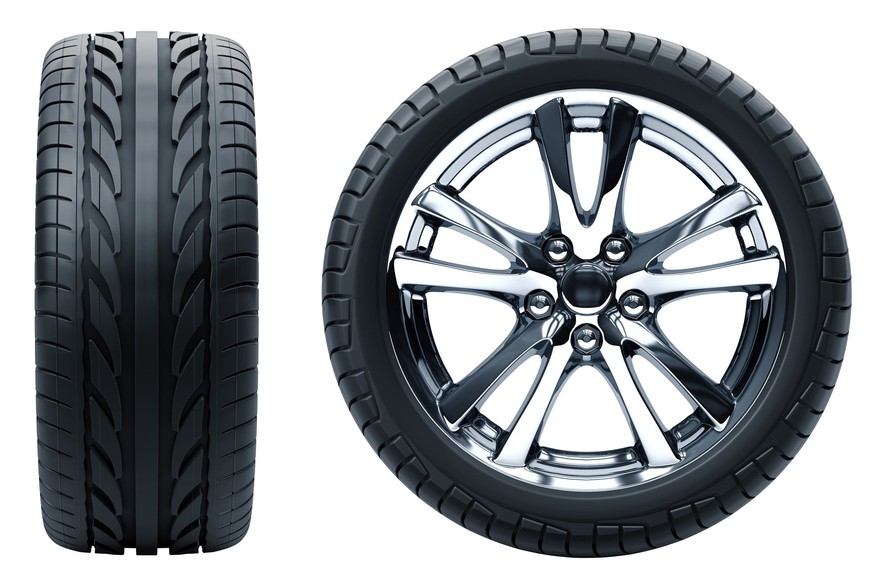Investing in publicly traded tire companies will suit value investors who are comfortable with a mature and low-growth industry.
If you're looking for a high-growth industry where revenue growth is king, then look away now. However, if you love cheap stocks in an unloved transportation sector, then tire and rubber industry stocks could be for you.

This stands to reason, as building scale typically matters in manufacturing, particularly in a capital-intensive business like tire manufacturing. Larger companies can also reduce costs by leveraging their greater purchasing power to negotiate more favorable deals.
Before delving into the details of the market's dynamics and how to profit from it, here is a list of some leading tire manufacturers.
The stocks
| Name and ticker | Market cap | Dividend yield | Industry |
|---|---|---|---|
| Bridgestone (OTC:BRDCY) | $30.7 billion | 3.13% | Auto Components |
| Compagnie Générale Des Établissements Michelin Société En Commandite Par Actions (OTC:MGDDY) | $23.2 billion | 4.78% | Auto Components |
| Continental Aktiengesellschaft (OTC:CTTA.Y) | $14.9 billion | 2.93% | Auto Components |
| Pirelli & C. S.p.A. (OTC:PLLI.F) | $7.4 billion | 3.94% | Auto Components |
| Sumitomo (OTC:SSUM.F) | $36.9 billion | 2.96% | Trading Companies and Distributors |
| Goodyear Tire & Rubber (NASDAQ:GT) | $2.5 billion | 0.00% | Auto Components |
How to invest in tire stocks
1. Open your brokerage app: Log in to your brokerage account where you handle your investments.
2. Search for the stock: Enter the ticker or company name into the search bar to bring up the stock's trading page.
3. Decide how many shares to buy: Consider your investment goals and how much of your portfolio you want to allocate to this stock.
4. Select order type: Choose between a market order to buy at the current price or a limit order to specify the maximum price you're willing to pay.
5. Submit your order: Confirm the details and submit your buy order.
6. Review your purchase: Check your portfolio to ensure your order was filled as expected and adjust your investment strategy accordingly.
A mature industry
In a sense, the tire industry is representative of a mature, low-growth industry. Such industries are typically characterized by relatively low growth, emphasizing growth through consolidation and wringing every bit of operational efficiency from tire and rubber manufacturing. Additionally, companies can expand their growth into new territories or end markets.
For example, the Goodyear/Cooper deal in 2021 was complementary. Cooper was particularly strong in the original equipment market (OEM) in China and the replacement market in the U.S. At the same time, Goodyear has typically been very strong in the U.S. OEM and replacement market.
Low growth is still growth
A few interesting points about the business:
- Tire sales are a combination of OEM and replacement sales; the latter means the industry isn't as cyclically tied to new vehicle sales as many investors might think.
- OEM tire sales depend on light vehicle production (which follows sales), while tire replacement sales depend on miles driven and increased wear and tear on tires.
- For an example of the importance of the tire replacement market, consider that about 70% of Goodyear's sales typically come from the replacement market.
- Generally, it's reasonable to expect long-term growth in the low single-digit range in the tire industry.
Cost pressures
Another way tire manufacturers can improve earnings is by lowering costs. The most variable cost, raw materials, moves with the price of oil. Raw materials accounted for 45% of Goodyear tires' cost of goods sold in 2024, and approximately 70% of the raw material price is influenced by oil prices.
It's a similar story at Michelin, where only steel cord and natural rubber materials aren't exposed to the price of oil. As a result, tire company margins came under pressure when raw material prices surged after the lockdowns ended.
Consequently, it's worth keeping an eye on raw material prices and considering tire manufacturers as a group of stocks worth considering when the global economy is growing and there is moderate inflation in raw material prices.
Related investing topics
A sector to invest in
These low-growth characteristics mean tire and rubber stocks will never be valued on the kind of earnings multiples that a high-growth software company will command. However, there are no prizes for only buying highly rated stocks, and investors can still generate high returns from stocks moving from undervalued to fair value.
That's a consideration that springs to mind when looking at the mid-single-digit enterprise-value-to-EBITDA (earnings before interest, taxes, depreciation, and amortization) multiples that most of the sector, including Goodyear, Michelin, and Pirelli, trades on.
A combination of steady but unexciting, long-term revenue growth prospects, along with some margin expansion through ongoing consolidation and cost-cutting, could generate excellent returns for investors over the long term.



